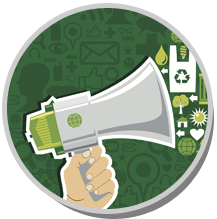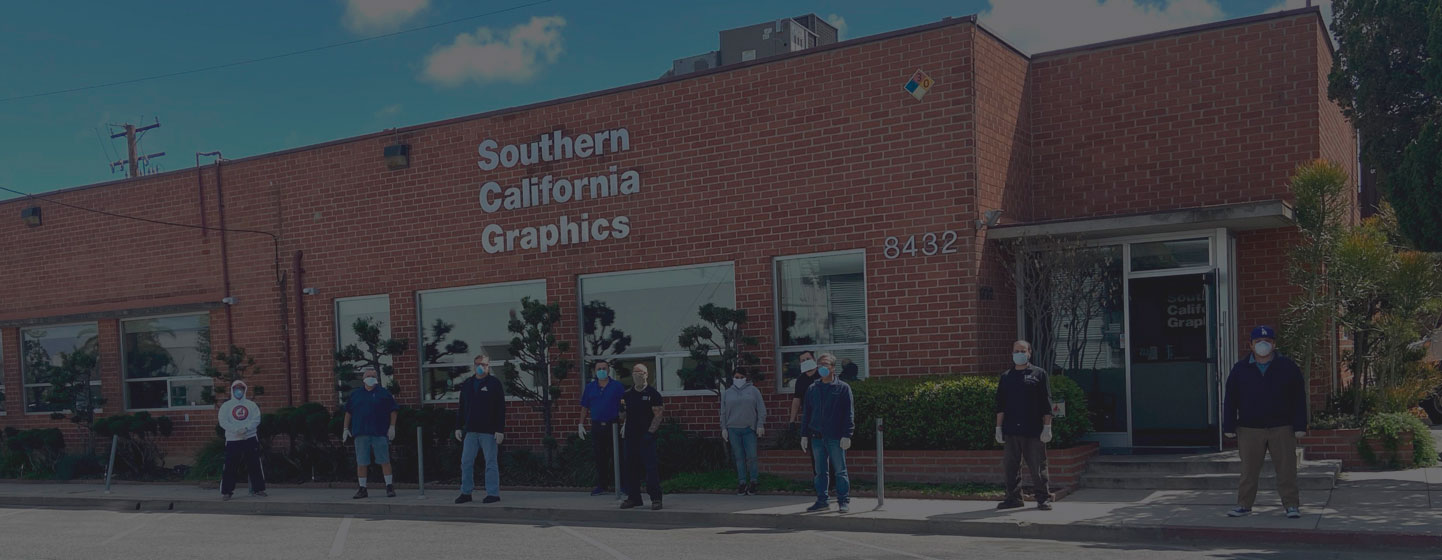Over at www.hongkiat.com Vladimir Gendelman put together a pieces of 11 different ways print marketing has out performed web designs. It is a very interesting concept and at SCG we have the ability to service both! By servicing both we make sure your print marketing and web design work go hand in hand like the examples shown below.
For years there have been reports that the printing industry is in danger. Those reports have been greatly exaggerated. Printing has merged with online technology to enhance a marketing strategy. We know first hand that web design made significant advances such as HTML5 & Responsive Design and Mobile Integration. Vladimir even admitted that print has certain marketing capabilities over websites, for instance there are still some things that flyers, presentation folders and brochures can do that technology has yet to properly replicate for the Web.
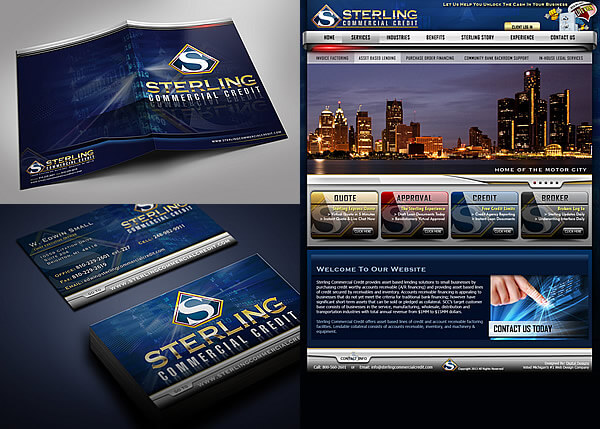
(Image Source: DigitalDesigns1.net)
It is pinnacle to point out that just because print design still has a leg up on web design (in certain areas) doesn’t mean that one is necessarily better than the other. Mr. Gendelman actually went on to say that the opposite is true; “It takes both a print and web presence working together to create a brand identity with maximum impact so we don’t move everything to the web.”
In this modern area of technology and digital marketing, at their best, print media can actually help promote your online identity. With the additions of print technology such as QR codes and NFC technology, companies can now create print that literally connects the audience to your website. Vladimire has pointed out what we have been saying all along in our print drives technology section.
Here are the 11 things print design can do but web design can’t.
1. Uniquely shaped canvas
No matter how creative your web design ideas may be, you are always limited to a rectangular-shaped canvas to account for rectangular-shaped screens. Meanwhile, print designs can be die cut into nearly any shape, giving you greater design flexibility. A unique shape is often unexpected and helps make your printed media stand out.
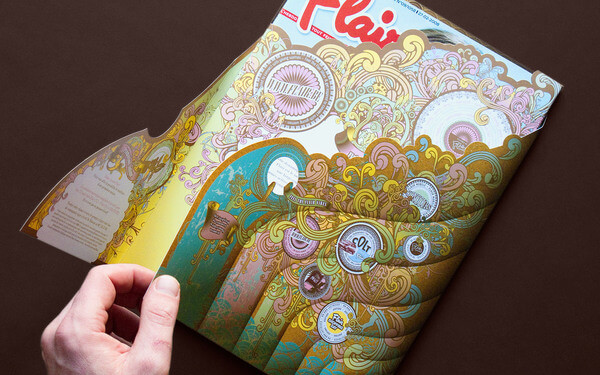
(Image Source: behance)
2. Texture and touchability
Print designs are meant to be touched, so the way your design feels can have a major impact on how your audience perceives it. A positive sensory experience can lead to a stronger connection to your audience.
(Image Source: Chon Shoaff)
Embossing, die cutting and spot coating give your print media an engaging tactile sensation. Even the thickness and texture of the stock can leave a positive impression.
3. Shiny special effects
Print designs can capture the light in a variety of ways. Spot coating can make certain elements glossy, while foil stamping and metallic ink can be used to create shiny, reflective designs that are impossible to replicate on a computer screen.
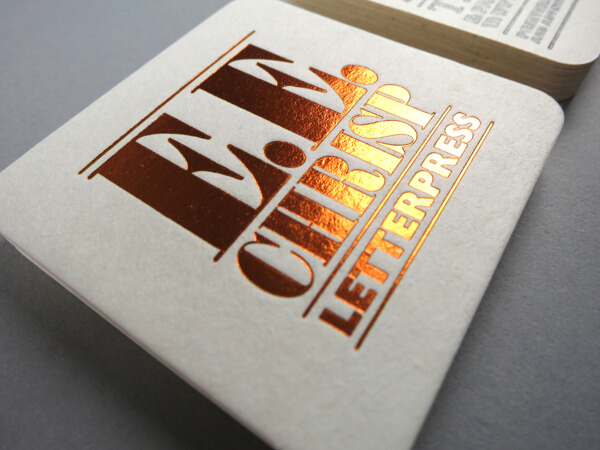
(Image Source: Loose Collective)
4. Full accessibility
The only way to access web content is through the use of a computer, smartphone, tablet or other internet-ready device. This requires your audience to own one of these devices (as well as an internet connection and power supply) in order to view your design. Print does not.
Meanwhile, print designs do not fall back on any other factor apart from direct human interaction (pick it up and read it) and this can happen at any time and any place, allowing them to reach any audience in any situation.
5. Visual consistency
A web-based design may look great on your screen but terrible on another, the color may be different, the user may use technologies you didn’t anticipate, or even pick the browser you wish they would use i.e. IE. There are too many factors to consider.
However if you bank on print, it allows direct control over the finished product with greater visual consistency, since all copies are made with the same materials and reviewed for variations in quality.
6. Harder to ignore
It’s easier for an audience to ignore a web design because they can simply close their browser, hit the back button or even click a link and jump to a new website. In comparison, print media must be physically thrown away, and due to the green movement that has taken over the world, something on print will have a higher chance of sticking around in homes, clinics and offices.
There’s also a greater chance that someone might stumble upon your marketing collateral later on (when there is less competition for their attention) and become engaged with your design.
7. 3D design possibilities
A web design can only exist as an image on a screen, so any sense of three-dimensional design is merely an optical illusion. Meanwhile, print media is an actual three-dimensional object, so many print effects (just right under 3D printing) have an actual, physical presence.
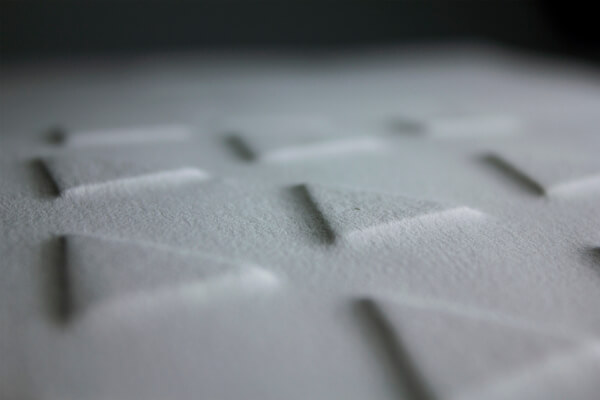
(Image Source: Katarzyna Krakowian)
For example, embossing is a common imprint method that creates a raised relief effect in the stock, allowing a design element to literally jump out at the audience.
8. Less stress on the eyes
Many audiences still prefer to read information on a piece of paper instead of a backlit computer screen because it creates less of a strain on their eyes and vision. Too much time in front of a screen can cause a variety of health hazards that have to do with sight, and possibly posture.
Printed materials allow your audience to read long passages of information with less or without discomfort. Even if science may not support this, your audience is more inclined to approach longer content on print that on screen.
9. Easier to scan for information
Since web designs have to be viewed on a screen, there is a limit to how much information can be displayed at once. This contributes to the study of navigation which is important to retain your visitors, and keep them coing back.
With print designs, the audience can view an entire page at one time, making it easier for them to quickly scan the document for the information they need.
10. More authority
Anyone can create a web presence using free website building tools, templates and hosting services, and many websites out there lead to malware, spyware and scam offers. As such, web designs don’t always carry the same level of authority, authencity and credibility that print designs do.
Because print media requires an investment of time, work and money to produce, it conveys a greater level of legitimacy to the audience.
11. Can be written on
Many people like to highlight sections of copy or write notes directly onto print media because it allows them to easily retrieve information (like a contact’s phone number) at a later time.
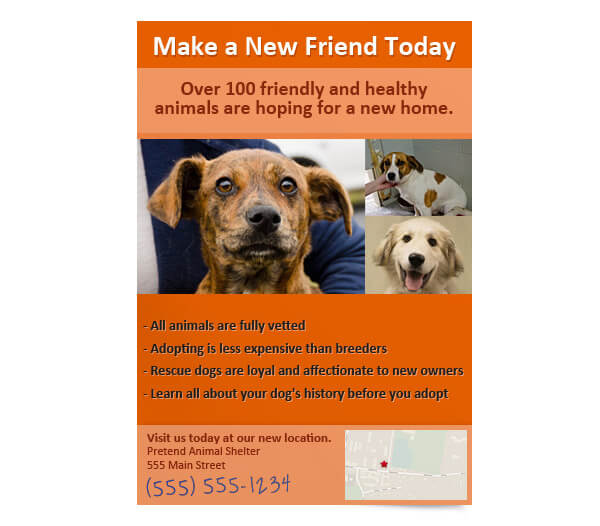
(Image Source: Printwand)
Although there are programs that can do the same for a web design, they are not widely used and require a greater level of work than simply jotting down a quick note. Also, when the audience sees their own handwriting on a piece of printed media, it creates a sense of familiarity and trust.
There were some great points made by http://www.hongkiat.com/ and Mr.Vladimir Gendelman.


